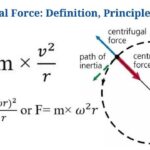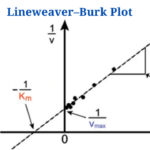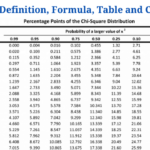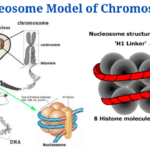Monohybrid Cross Definition
A monohybrid cross is a genetic cross between two individuals who have homozygous genotypes for a single feature or trait, with the phenotype often being the polar opposite.
- Monohybrid crossings are commonly used to ascertain the genotypes of homozygous individuals’ progeny. The hybrid resulting from this cross aids in the determination of the allele’s dominant genotype.
- Monohybrid crosses are utilised to determine the genetic mix between individuals with heterozygous genotypes, despite the fact that they are commonly connected with homozygous genotypes.
- The monohybrid cross’s success is judged by the monohybrid ratio of the second-generation offspring.
- Monohybrid crosses are used to determine which allele is dominant for a specific genetic characteristic. When one parent is homozygous for one allele and the other is homozygous for the other, a cross occurs between the parents.
- The children of the cross are heterogeneous hybrid offspring who express the dominant trait.
Steps of Monohybrid Cross
- Monohybrid crossings are used to determine the dominant allele and assess the phenotypic and genotypic ratios of the crosses. The stages involved in performing a monohybrid cross are as follows:
- A certain character or attribute is chosen, and alleles are denoted by specific alphabet characters. Upper case letters are used to signify dominant alleles, whereas lower case letters are used to indicate recessive alleles.
- The phenotype and genotype of the parents being crossed are listed in the Punnet square. Because the gametes will be haploid as a result of meiotic division, the genotype of the gametes is also determined.
- The most likely genotype combination is written within the Punnet square, as all genotype combinations are possible because fertilisation is a random process.
- The offspring’s phenotypic and genotypic ratios are calculated and recorded. The F1 generation is the consequence of this process.
Monohybrid Cross Examples
- Mendel’s Peas
- In the instance of peas, George Mendel used the monohybrid cross to determine dominant and recessive features.
- The length of the plant is an example of such an experiment. Peas vary in height, with some being taller and others being shorter.
- TT represents the homozygous allele for tall pea plants, while tt represents the homozygous allele for short/dwarf pea plants.
- The heterozygous genotype is produced via a monohybrid cross between the two plants (Tt).
- The hybrids have long pea plants as phenotypes, showing that the tall trait is dominant and the short trait is recessive.
- Huntington’s disease
- Huntington’s disease is a disorder caused by a genetic mutation. The Huntingtin gene is responsible for the disorder.
- Studies have been carried out in order to identify the genotypic state that causes the sickness.
- When one person’s homozygous dominant gene was matched with another person’s homozygous recessive gene, all of the offspring carried the dominant allele.
- It was discovered that the condition was caused by the dominant allele, and that all children of such persons would develop the sickness.
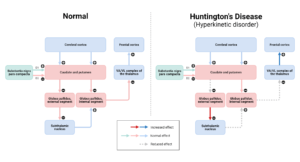
Difference Between Monohybrid and Dihybrid Cross
(Monohybrid vs. Dihybrid Cross)
| Characteristics | Monohybrid Cross | Dihybrid Cross |
| Definition | A monohybrid cross is a genetic cross between two individuals who have homozygous genotypes for a single feature or trait, with the phenotype often being the polar opposite. |
A Dihybrid cross is a genetic cross between two people who have homozygous or heterozygous genotypes for two features or traits. |
| Occurs between |
Monohybrid crossings occur when homozygous individuals with distinct alleles for the same characteristic cross. |
Dihybrid crossings occur when homozygous or heterozygous individuals with different alleles for two different characteristics cross |
| Phenotypic ratio | In the event of a monohybrid cross, the phenotypic ratio of the offspring in the F2 generation is 3:1. | In the event of a dihybrid cross, the phenotypic ratio of the offspring in the F2 generation is 9:3:3:1. |
| Genotypic ratio |
In the event of a monohybrid cross, the genotypic ratio of the children in the F2 generation is 1:2:1. |
In the case of a dihybrid cross, the genotypic ratio of the offspring in the F2 generation is 1:2:2:4:1:2:1:2:1. |
| Test cross ratio |
A monohybrid cross’s test cross-ratio is 1:1:1:1. |
A dihybrid cross’s test cross-ratio is 1:1. |
| Significance | Monohybrid crosses are used to determine a character’s dominant allele. | Dihybrid crosses are used to investigate offspring distribution. |
| Examples |
The cross between tall pea plants and dwarf pea plants is an example of a monohybrid cross. |
The cross between pea plants with yellow round and green wrinkled seeds is an example of a dihybrid cross. |
Click Here for Complete Biology Notes
Monohybrid Cross Citations
- https://askinglot.com/how-do-you-use-a-monohybrid-cross-in-a-punnett-square
- https://pediaa.com/difference-between-monohybrid-and-dihybrid-inheritance/
- https://www.thoughtco.com/monohybrid-cross-a-genetics-definition-373473
- https://askanydifference.com/difference-between-dominant-and-recessive-allele/
- https://www.berufsschule-schongau.de/monohybrid_cross_answers.pdf
Related Posts
- Phylum Porifera: Classification, Characteristics, Examples
- Dissecting Microscope (Stereo Microscope) Definition, Principle, Uses, Parts
- Epithelial Tissue Vs Connective Tissue: Definition, 16+ Differences, Examples
- 29+ Differences Between Arteries and Veins
- 31+ Differences Between DNA and RNA (DNA vs RNA)
- Eukaryotic Cells: Definition, Parts, Structure, Examples
- Centrifugal Force: Definition, Principle, Formula, Examples
- Asexual Vs Sexual Reproduction: Overview, 18+ Differences, Examples
- Glandular Epithelium: Location, Structure, Functions, Examples
- 25+ Differences between Invertebrates and Vertebrates
- Lineweaver–Burk Plot
- Cilia and Flagella: Definition, Structure, Functions and Diagram
- P-value: Definition, Formula, Table and Calculation
- Nucleosome Model of Chromosome
- Northern Blot: Overview, Principle, Procedure and Results









